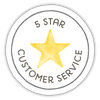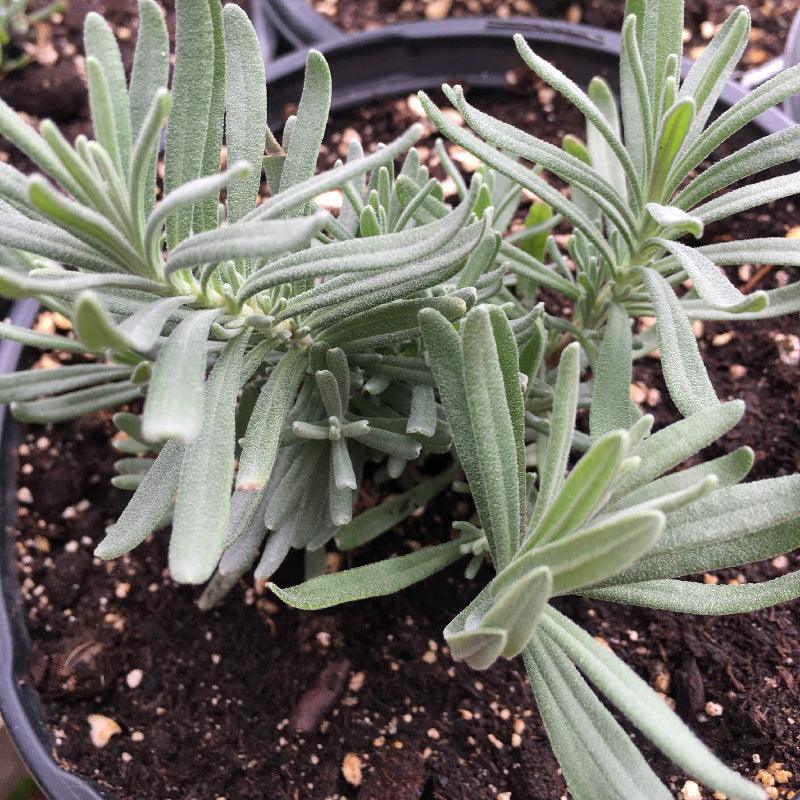Item Number: PV209
Fred Boutin Lavender (1 Gallon)
Shimmering Leaves, Gentle Fragrance
This French-style lavender, introduced in 1984 and cultivated in Southern California, stands at 3' during full bloom. The evergreen bush, adorned with silver leaves, reaches 18", while summer bloom spikes add an extra 18". Featuring a medium violet-blue hue, it emits a heady fragrance, though not as intense as some counterparts. Renowned for sturdy flower spikes, it's ideal for crafts and dried arrangements, bringing enduring beauty to any setting.
Selecting the Right Location:
Fred Boutin Lavender thrives in full sun and well-drained soil. Choose a location in your garden that receives at least 6-8 hours of sunlight per day. Ensure the soil is well-drained, as lavender is susceptible to root rot in waterlogged conditions. Sandy or gravelly soils with good drainage are ideal for Fred Boutin Lavender cultivation.
Planting Fred Boutin Lavender:
Transplant starts outdoors after the danger of frost has passed and soil temperatures have warmed to at least 60°F (15°C). Space plants 12-24 inches apart to allow for proper air circulation and growth.
Watering and Care:
Fred Boutin Lavender is drought-tolerant once established and prefers slightly dry conditions. Water newly planted lavender regularly to help establish a strong root system, but avoid overwatering, as this can lead to root rot. Once established, Fred Boutin Lavender rarely needs supplemental watering, except during prolonged periods of drought. Water deeply but infrequently to encourage deep root growth and drought resistance.
Fertilizing Fred Boutin Lavender:
Fred Boutin Lavender is a light feeder and does not require heavy fertilization. Incorporate organic compost into the soil before planting to provide essential nutrients. Avoid over-fertilizing Fred Boutin Lavender, as excessive nitrogen can lead to lush foliage but reduced flower production and fragrance. Side-dress with compost or a balanced fertilizer once or twice during the growing season if necessary.
Pruning and Maintenance:
Prune Fred Boutin Lavender regularly to maintain its shape and encourage bushy growth. Remove spent flowers and trim back any leggy or woody stems to promote new growth. Prune Fred Boutin Lavender in early spring or late summer, avoiding heavy pruning in the fall, as this can stimulate new growth that may not harden off before winter.
Harvesting Fred Boutin Lavender:
Harvest Fred Boutin Lavender flowers when they are in full bloom but before they start to fade. Cut flower stems just above a leaf node using sharp scissors or pruning shears. Harvest Fred Boutin Lavender in the morning after the dew has dried but before the heat of the day, as this is when the essential oils are most concentrated.
Pest and Disease Management:
Fred Boutin Lavender is relatively pest and disease-resistant, but it can be susceptible to aphids, spider mites, and fungal diseases in humid conditions. Monitor Fred Boutin Lavender plants regularly for signs of pests or diseases, and treat them promptly with organic methods such as insecticidal soap or neem oil if necessary.
Using Fred Boutin Lavender:
Fred Boutin Lavender flowers and foliage have many culinary, medicinal, and household uses. Use fresh or dried Fred Boutin Lavender flowers to flavor baked goods, teas, syrups, and savory dishes. Fred Boutin Lavender essential oil is prized for its calming and aromatic properties and can be used in aromatherapy, massage oils, bath salts, and homemade beauty products.
Growing Fred Boutin Lavender is a rewarding and enjoyable experience that offers a multitude of benefits for both the garden and home. By following these guidelines for planting, caring for, and harvesting Fred Boutin Lavender, you can enjoy the beauty and fragrance of this versatile herb year-round. Whether used for culinary, medicinal, or decorative purposes, Fred Boutin Lavender adds a touch of elegance and charm to any garden or landscape.
Visit our Berry, Vine & Crowns Characteristics Chart to compare growing characteristics for all our berries, vines, and crowns.




Check Your Zone Compatibility:
Compatible with your zone.
Growing Zone for

Our Guarantee To You
Since 1976, we've served our customers at every stage of growing. Please contact us at any time. We are happy to support and assist you.
Shipping Information
Shipping Information
Shipping Weight: 0.5 lb
Features
Features
- Attracts Bees/Butterflies
- Container Compatible
- Does Not Require Support
- Drought Tolerant
- Edible Flower
- Fragrant
- Good Cut Flower
- Good for Drying
- Heat Tolerant
- Heirloom
- Long-Lived
- Open-Pollinated
- Somewhat Drought Tolerant
- Suited to Warmer Climates
Characteristics
Characteristics
Planting & Care
Planting & Care
Soil and Water: Plants need good drainage and moderate soil fertility. Once established only needs moderate water.
Planting and Growing: Plant Fred Boutin Lavender starts outdoors after the danger of frost has passed and soil temperatures have warmed to at least 60°F (10°C). Space plants 8-12 inches apart in rows.
Harvesting & Storage: Plants will bloom moderately in the first year and come into full bloom the second year. Plant can be shaped after the bloom to keep compact. Remove flowers and use either fresh or dried.
Useful Information
Useful Information
Guarantee
Guarantee
We guarantee the perishable items we sell to be in good, viable condition when we sell them. Perishable items include, but are not limited to, garlic bulbs, flower bulbs, seed potatoes, onion sets & transplants, potted or bare root trees, vegetable crowns, etc. If your perishable item arrives in substandard condition, take photographs and please contact us within 3 days of the purchase date (or delivery date) and we will provide you with a refund of the purchase price (excluding shipping costs), or a replacement. Accordingly, we urge you to open any boxes marked as ""Perishable"" immediately upon receiving them and inspect the shipment thoroughly (do not crack open heads of garlic, we do not accept claims on cracked garlic). Because some perishable items can deteriorate very quickly, we cannot accept any claims beyond the 3-day time frame as it becomes too difficult to determine if these items were delivered in substandard condition, or if they turned into such substandard condition because of having been improperly cared for or stored once delivered.
Share


